Welcome to Grass Valley! Home to many bird species, Grass Valley is a great place to explore the diverse variety of birds that inhabit this beautiful area.
With over 200 species of birds, Grass Valley provides a unique opportunity to observe and appreciate the beauty of birds in their natural environment.
From the majestic bald eagles soaring overhead to the colorful warblers and hummingbirds flitting from branch to branch, the variety of birds seen in Grass Valley is sure to delight any bird enthusiast.
Whether you are looking to observe birds in their natural habitat or simply enjoy the beauty of their songs, Grass Valley is an excellent place to start.
1. American Kestrel
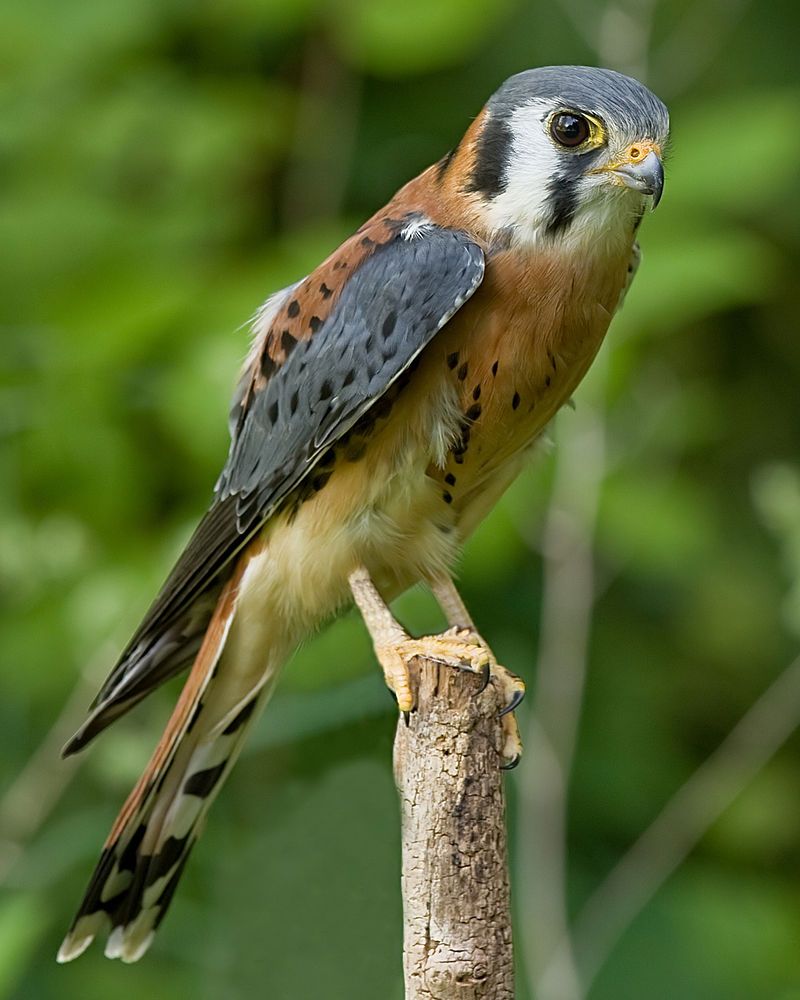
The American kestrel, also known as the sparrow hawk, is a type of falcon native to North America. It is the smallest and most common falcon found in the region.
The size of the American kestrel can vary depending on the subspecies and sex, ranging from about the same size as a blue jay to that of a mourning dove. This gives the kestrel a two-to-one size range.
The American kestrel is known for its distinctive markings, including a reddish-brown head and back, a white chest, and a black eye stripe. It is also recognized for its agility and speed, which it uses to hunt small prey such as rodents and insects.
The American kestrel is an important part of the North American ecosystem, as it helps to keep the population of small animals in check.
| Kingdom | Animalia |
| Phylum | Chordata |
| Class | Aves |
| Order | Falconiformes |
| Family | Falconidae |
| Genus | Falco |
| Species | F. sparverius |
2. Red-Tailed Hawk
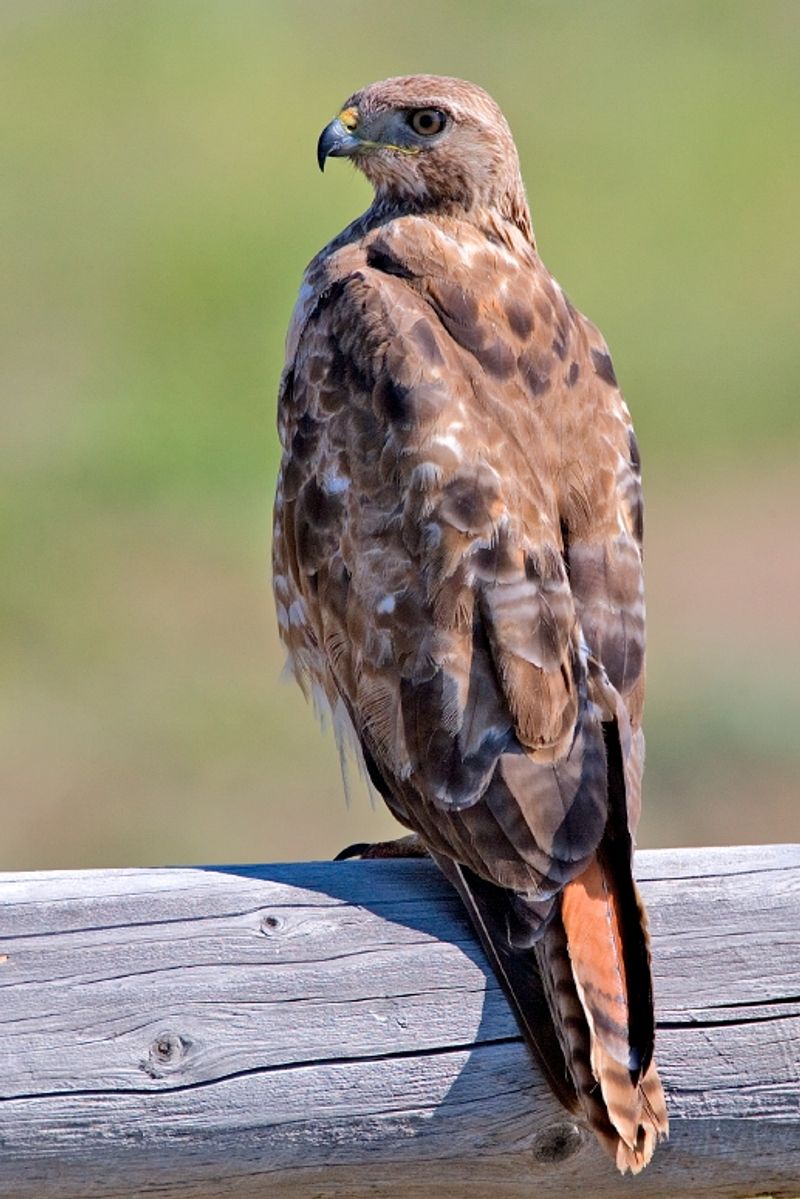
The red-tailed hawk is a type of bird of prey that is found across a wide range of North America, from the northernmost regions of Alaska and Canada down to Panama and the West Indies.
This species is found in many areas, making it one of the most common birds of prey in the world.
It is part of the genus Buteo, which includes many species of birds of prey. Red-tailed hawks have a distinctive appearance, with light-colored breasts and reddish-brown feathers on their tails. They have powerful wings and are capable of flying at high speeds.
They feed mainly on small mammals and birds, and can also hunt larger animals such as rabbits.
They typically nest in trees or on cliffs, and will also use man-made structures such as telephone poles and buildings. Red-tailed hawks play an important role in the environment, as they help to control the populations of their prey.
They are also important to the ecosystem, as they help to disperse seeds and fertilize plants. They are also often observed in urban areas, where they are able to find food and shelter. As a result, they are often seen as symbols of strength and resilience.
| Kingdom | Animalia |
| Phylum | Chordata |
| Class | Aves |
| Order | Accipitriformes |
| Family | Accipitridae |
| Genus | Buteo |
| Species | B. jamaicensis |
3. Sandhill Crane
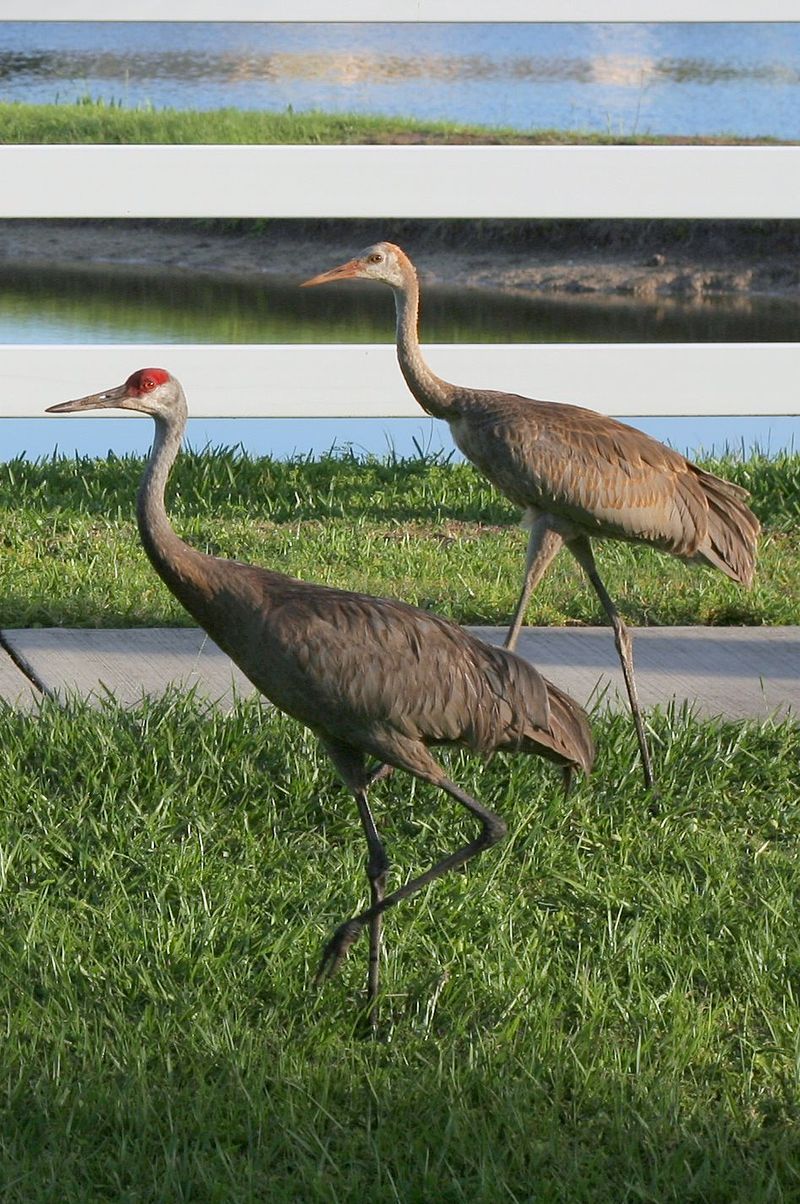
The sandhill crane is a species of large crane native to North America and extreme northeastern Siberia.
This species is named for the type of habitat it is typically found in, which is often near sandhills such as those found at the Platte River on the edge of Nebraska’s Sandhills.
This area is part of the larger American Great Plains, a vast expanse of flat, grassy land stretching from the Rocky Mountains in the west to the Appalachian Mountains in the east.
Sandhill cranes are found in this region, as well as in wetlands, prairies, and agricultural fields. The sandhill crane is a tall, graceful bird, with a long neck and long legs. It has a grey body with a white face and red patch on its head.
Its wingspan can reach up to 6.5 feet, and its average weight is between 3-7 pounds. The sandhill crane is an omnivore, feasting on small invertebrates, insects, frogs, and plant material.
It is also known to eat crops, such as corn and wheat, which can lead to conflicts with farmers. The sandhill crane is a migratory species, and its range can extend from Alaska to Mexico.
During the winter months, large flocks of these birds can be seen flying south from their breeding grounds in the northern US and Canada.
They will often congregate in large flocks at wetlands and estuaries, where they can find food and shelter. The sandhill crane is an important species for many reasons.
It is a symbol of the American Great Plains, and its presence in this region is indicative of healthy ecosystems and habitats. The sandhill crane is also an important part of many cultures, as it has been used in artwork, music, and literature for centuries.
Unfortunately, the sandhill crane is threatened by habitat loss, as well as by hunting and the effects of climate change. Conservation efforts are necessary to ensure that this species can continue to thrive in its natural range.
| Kingdom | Animalia |
| Phylum | Chordata |
| Class | Aves |
| Order | Gruiformes |
| Family | Gruidae |
| Genus | Antigone |
| Species | A. canadensis |
4. Canyon Wren
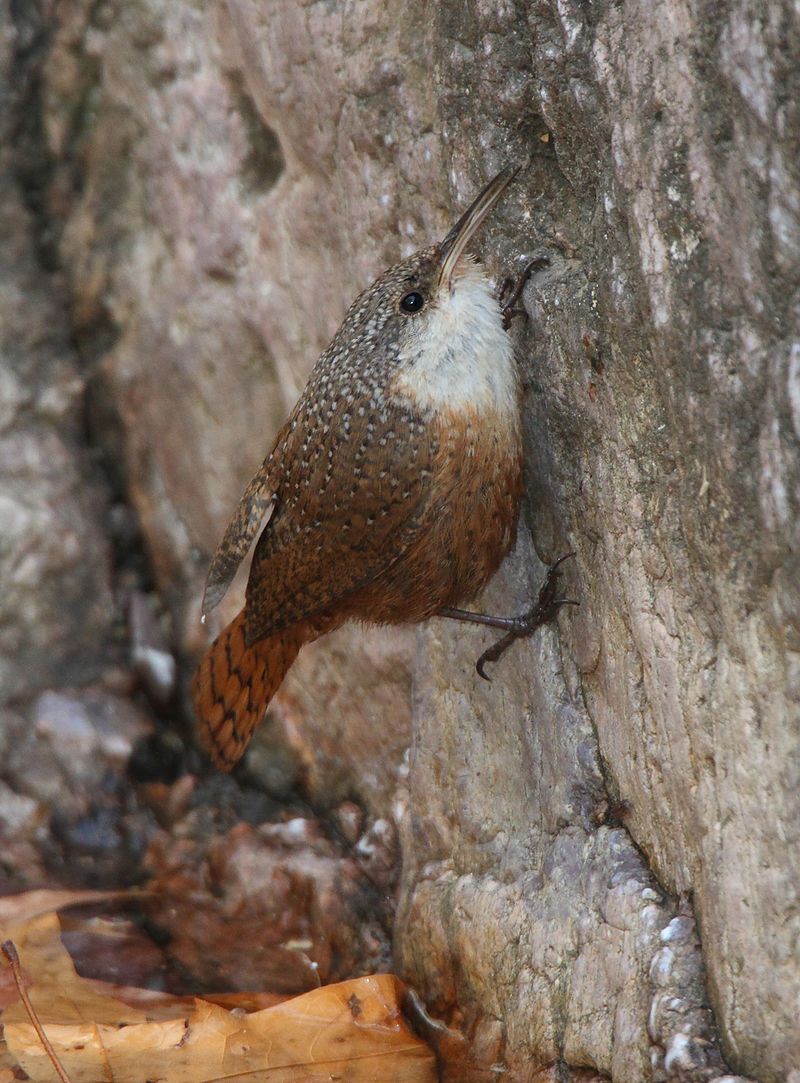
The canyon wren is a small songbird that is native to North America and belongs to the wren family, Troglodytidae. It is found across its entire range, typically in dry and rocky regions such as cliffs, outcrops, and canyons.
This species is quite adaptive and can make its home in diverse habitats, from desert regions to mountain ranges. The canyon wren is a unique bird that is well-adapted to its environment. It is well-known for its loud, melodious song that is heard throughout its range.
The canyon wren is a solitary species, but can sometimes be seen in pairs during the breeding season. They typically build their nests in crevices and other nooks in the rocky landscape.
The canyon wren is a fascinating species, and its song adds an enchanting element to the already beautiful landscape of the American Southwest.
| Kingdom | Animalia |
| Phylum | Chordata |
| Class | Aves |
| Order | Passeriformes |
| Family | Troglodytidae |
| Genus | Catherpes |
| Species | C. mexicanus |
5. Western Tanager
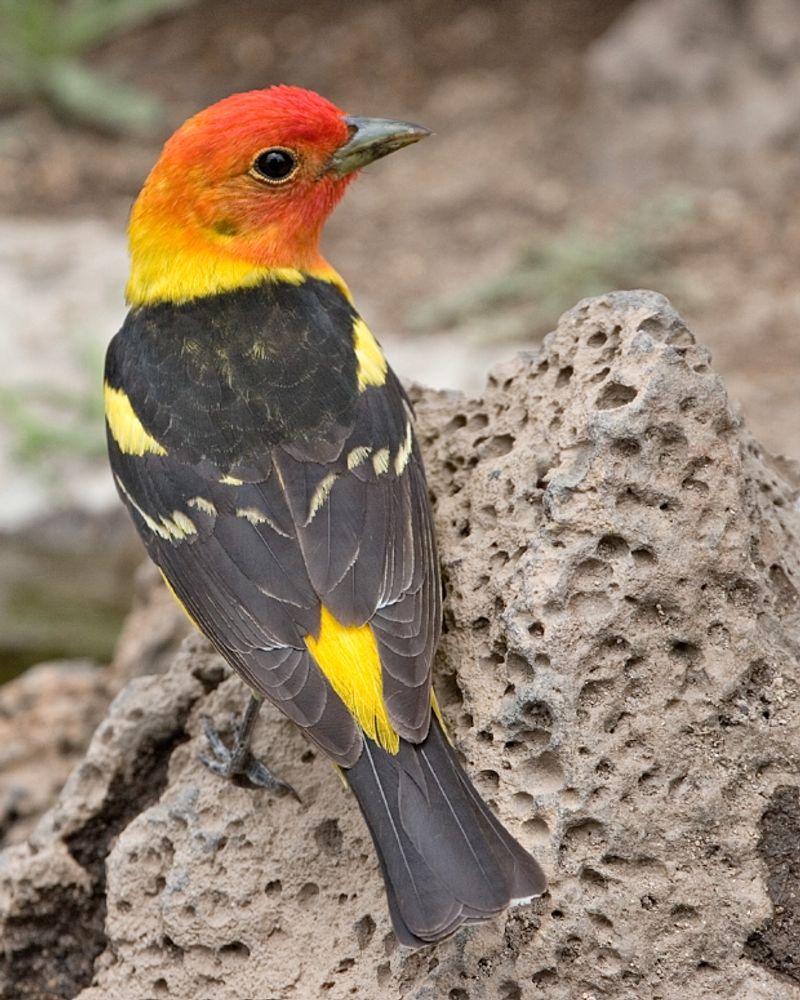
The western tanager is a medium-sized American songbird that was formerly part of the tanager family. Now, it and other members of its genus are classified in the cardinal family.
Its physical characteristics, such as its plumage and vocalizations, are similar to other birds in the cardinal family. For example, it has a reddish head and wings, a white belly, and a yellow breast.
It is known for its melodious and beautiful vocalizations, which are similar to other cardinals. The western tanager is found throughout much of the western United States, and it is a common sight in many areas.
It is an important part of the ecosystem, providing food and shelter for other species.
| Kingdom | Animalia |
| Phylum | Chordata |
| Class | Aves |
| Order | Passeriformes |
| Family | Cardinalidae |
| Genus | Piranga |
| Species | P. ludoviciana |
6. White-Breasted Nuthatch
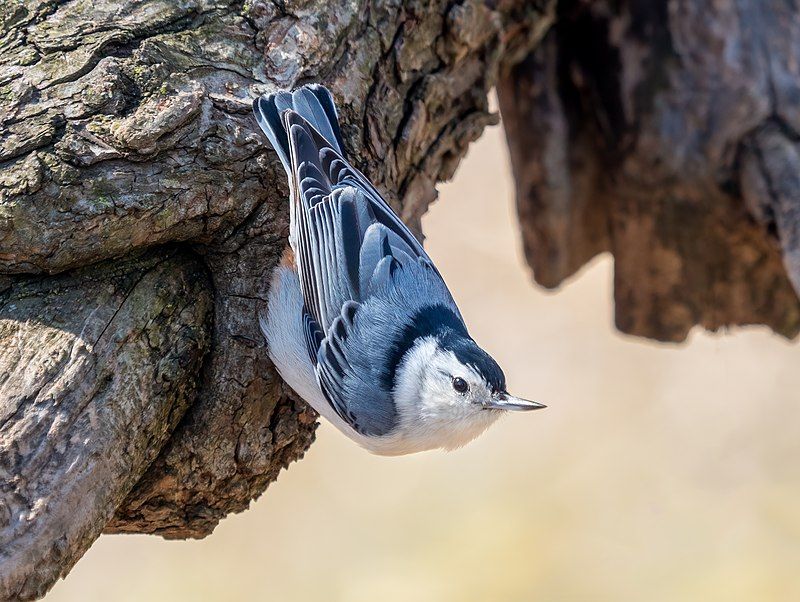
The white-breasted nuthatch is an important member of the nuthatch family, Sittidae. It is a medium-sized bird, measuring approximately 15.5 cm in length.
This species of bird is a common sight all across North America and is known for its acrobatic antics as it hops around on trees. Its white chest and gray back make it distinctive from other birds. It is also distinct from other nuthatches by its bright white eyebrow stripe.
The white-breasted nuthatch is an adaptable species, found in a variety of habitats, including deciduous and coniferous forests, as well as backyards and urban parks. It has a wide range of vocalizations, including a loud “sneezing” call.
Its diet consists of insects, spiders, and seeds, which it forages for on the ground, trees, and even bird feeders. The white-breasted nuthatch is an important part of the ecosystem, and its presence is a sign of a healthy, diverse habitat.
| Kingdom | Animalia |
| Phylum | Chordata |
| Class | Aves |
| Order | Passeriformes |
| Family | Sittidae |
| Genus | Sitta |
| Species | S. carolinensis |
7. Turkey Vulture
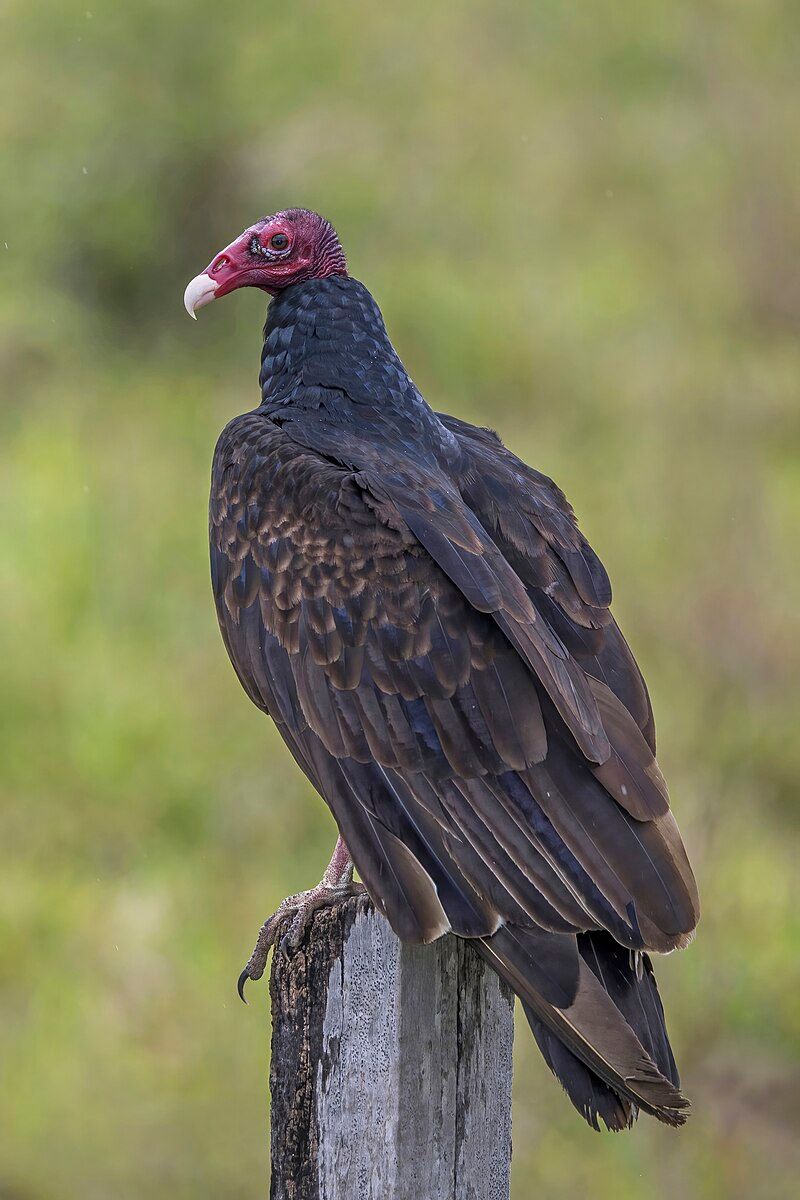
The turkey vulture is a species of New World vulture, which is found across a vast area of the Americas. It is one of three species in the genus Cathartes and is a member of the family Cathartidae.
The range of the turkey vulture extends from southern Canada to the southernmost tip of South America. This makes it one of the most widely distributed vulture species in the world. Turkey vultures are medium-sized birds, with a wingspan of between four and five feet.
They are typically dark brown or black in color, with a bald head and red facial skin. They are scavengers, feeding mainly on carrion and rotting fruits. They have an excellent sense of smell, which allows them to locate their prey from great distances.
Turkey vultures are highly social animals, and can often be seen in large groups, soaring in the air or perched on trees. They are also known to form long-term pair bonds, and some pairs have been observed to remain together for over twenty years.
Turkey vultures play an important role in the environment. They help to keep food sources clean and free from disease, as their scavenging helps to limit the spread of pathogens. They also provide food for other animals, such as hawks, foxes and coyotes.
Overall, the turkey vulture is an impressive and important species, whose presence is essential to the health of the environment. Its wide distribution across the Americas makes it an iconic symbol of the continent’s natural beauty.
| Kingdom | Animalia |
| Phylum | Chordata |
| Class | Aves |
| Order | Accipitriformes |
| Family | Cathartidae |
| Genus | Cathartes |
| Species | C. aura |
8. House Sparrow
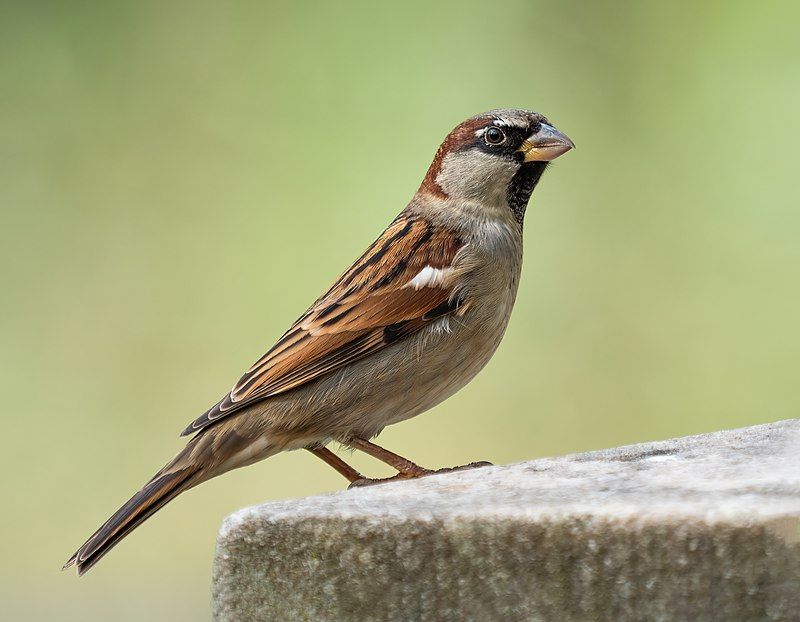
The house sparrow is a species of bird native to parts of the world, belonging to the Passeridae family. It is a small bird typically measuring 16 cm in length and weighing between 24-39.5 g.
The coloring of females and young birds is generally pale brown and grey, while males have brighter black, white, and brown markings. These birds are social creatures, often living in colonies and gathering in large flocks.
They are omnivores, meaning they feed on both plants and animals. They are common sights in agricultural areas and urban places, and are especially attracted to bird feeders.
House sparrows are generally quite hardy and tolerant of human activity, making them popular birds to observe and study.
| Kingdom | Animalia |
| Phylum | Chordata |
| Class | Aves |
| Order | Passeriformes |
| Family | Passeridae |
| Genus | Passer |
| Species | P. domesticus |
9. Olive-Sided Flycatcher
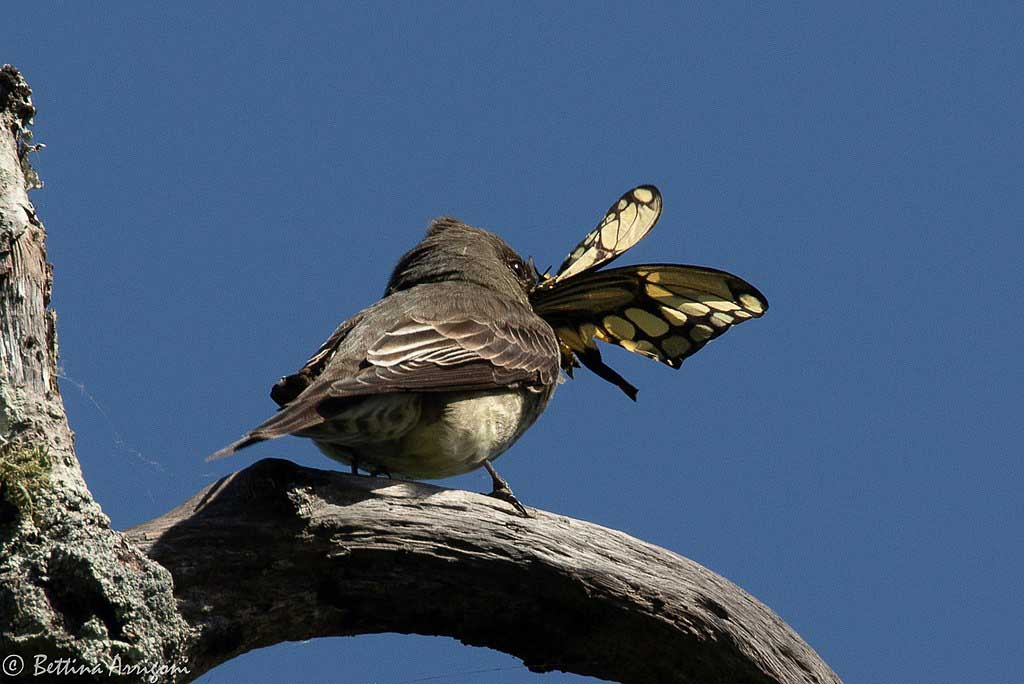
Source: Wikipedia
The olive-sided flycatcher is a species of passerine bird belonging to the family Tyrannidae, commonly known as Tyrant flycatchers. It is a small to medium-sized bird, typically measuring around 18–20 cm in length.
It is a migratory species, traveling from South to North America to breed during the summer months. The olive-sided flycatcher is a very agile flyer and is often seen chasing after flying insects while in flight.
Its diet consists mainly of flying insects, such as flies, bees, and dragonflies. It also eats fruits and berries when available. The olive-sided flycatcher is a solitary bird, generally avoiding large flocks.
They can be found in a variety of habitats, from open woodlands and wetlands to meadows and shrublands.
They are most often seen perched on dead trees, power lines, and other open perches. The olive-sided flycatcher is a species of conservation concern due to population declines in recent years. This is likely due to the loss of habitat, as well as changes in land-use practices.
Conservation efforts, such as habitat protection and restoration, are being carried out in order to try and help the species recover and ensure its future survival.
| Kingdom | Animalia |
| Phylum | Chordata |
| Class | Aves |
| Order | Passeriformes |
| Family | Tyrannidae |
| Genus | Contopus |
| Species | C. cooperi |
10. Bushtit
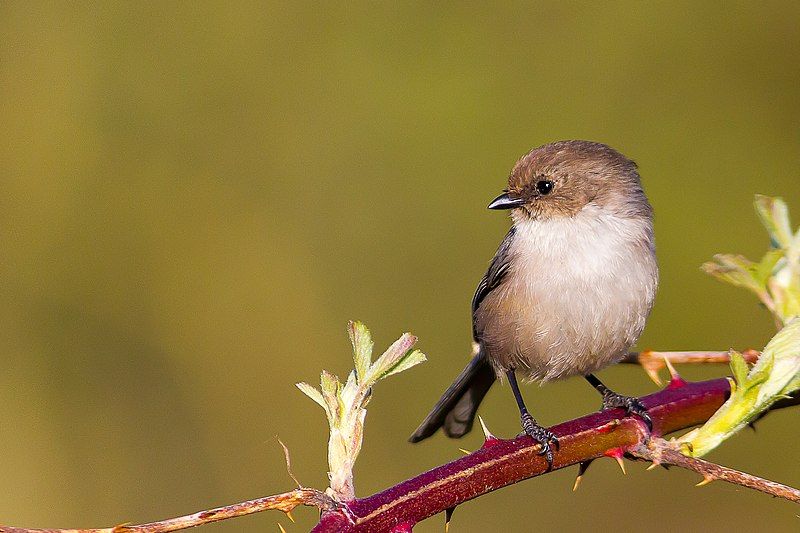
The American bushtit is a small songbird that can be found in the New World, which includes the United States, Canada, Mexico, and Central and South America. It is the only species in its genus, Psaltriparus, and the only species in its family, Aegithalidae.
The American bushtit has a variety of fun characteristics. It is small, weighing only around 0.3 ounces, and is generally gray in color with white and black markings. It has a long tail that it can use to balance itself as it hops around.
The bushtit is very social and lives in flocks that are often quite large, sometimes up to 100 birds. It feeds mainly on insects, spiders, and other invertebrates, and it will also eat small berries and nuts.
The American bushtit nests in tangled masses of spider webs and other vegetation, making it difficult to spot in the wild. This species is also known for its ability to produce an array of different vocalizations, such as chirps, whistles, and trills.
Overall, the American bushtit is an interesting and delightful species that is unique to the New World.
| Kingdom | Animalia |
| Phylum | Chordata |
| Class | Aves |
| Order | Passeriformes |
| Family | Aegithalidae |
| Genus | Psaltriparus |
| Species | P. minimus |
11. White-Faced Ibis
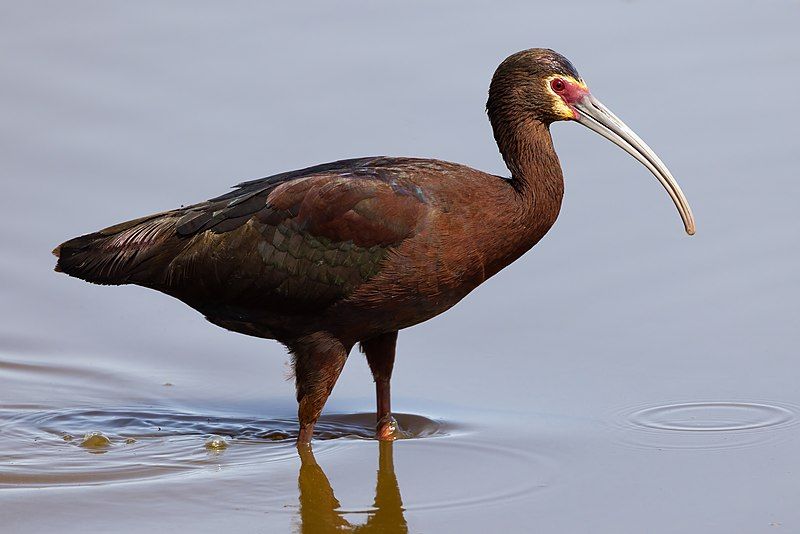
The white-faced ibis is a type of bird that belongs to the Threskiornithidae family, which is commonly referred to as the ibis family. This bird has a body that is adapted for wading in shallow water, making it well-suited for life near water sources.
The white-faced ibis typically breeds in large colonies in areas of marshland, where it builds nests in bushes and low trees. These colonies often consist of hundreds of birds, and they will often stay in the same area for many years.
The white-faced ibis is an important species for the environments it inhabits, as it helps to control the population of certain types of insects and other small animals. Furthermore, its presence in marshlands helps to maintain the biodiversity of the area.
| Kingdom | Animalia |
| Phylum | Chordata |
| Class | Aves |
| Order | Pelecaniformes |
| Family | Threskiornithidae |
| Genus | Plegadis |
| Species | P. chihi |
12. Columbidae
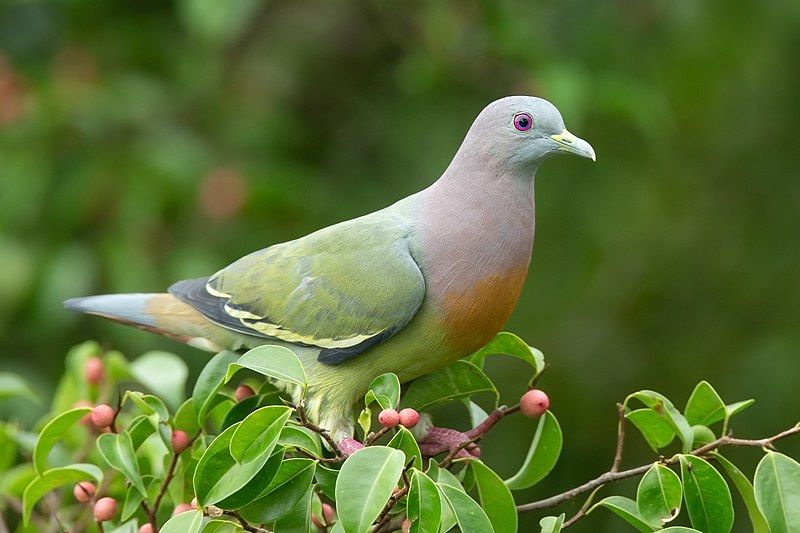
Columbidae is a family of birds that includes doves and pigeons. It is the only family in the order Columbiformes, which is a group of birds that have stout bodies, short necks, and short, slender bills.
Some species of these birds have fleshy ceres, which is a fleshy area above the bill and around the nostrils. Columbidae mainly feed on seeds, fruits, and plants. The diet of doves and pigeons is varied, and they can usually be found foraging for food on the ground.
They also eat insects, worms, and other small invertebrates. Doves and pigeons are found in the wild, but they are also kept as pets in many parts of the world.
They are seen as symbols of peace, love, and hope, and they have been used in many religious and cultural ceremonies throughout history. The Columbidae family is an important part of the world’s diversity.
They are found in many different habitats, from dense forests to open fields. They are known to be hardy and adaptable, and can survive in a variety of climates.
These birds are an important part of the ecosystem, providing food and shelter for other animals and helping to spread seeds and fruits.
| Kingdom | Animalia |
| Phylum | Chordata |
| Class | Aves |
| Clade | Columbimorphae |
| Order | Columbiformes |
| Family | Columbidae |
13. Belted Kingfisher
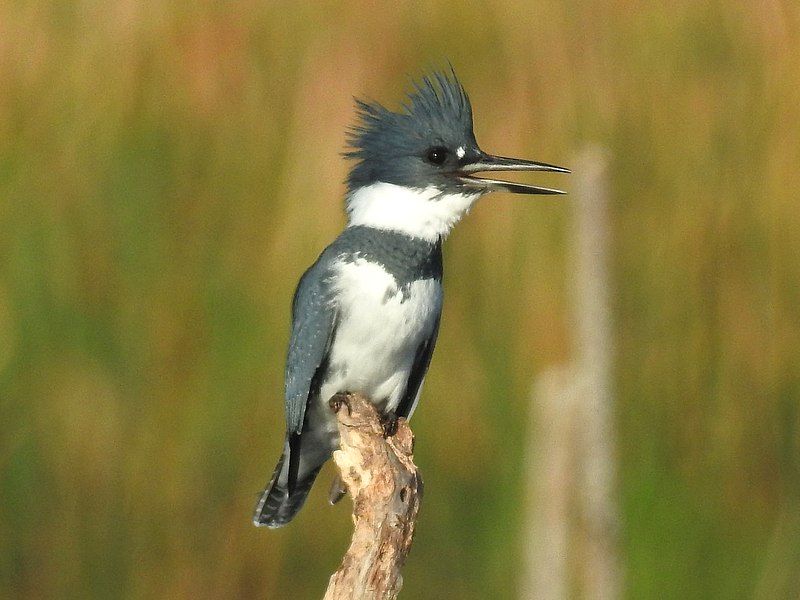
The belted kingfisher is a large, vibrant bird that is native to North America. It belongs to the family of kingfishers, Alcedinidae, which are known for their bright colors and impressive diving abilities.
The family of Alcedinidae includes species such as the belted kingfisher, the green kingfisher, and the river kingfisher. Until recently, all species of kingfishers were placed in the same family, Alcedinidae.
However, recent research has suggested that this should be divided into three subfamilies. These include Alcedinidae, Halcyoninae, and Cerylinae. The Alcedinidae are the most diverse, containing over 80 species of kingfishers.
The Halcyoninae are the second largest subfamily and contain about 30 species of kingfishers. The Cerylinae are the smallest subfamily and contain only one species, the Ringed Kingfisher.
Each of these three subfamilies contains species that are adapted to different environments and have different habits. All three families of kingfishers are found on every continent except Antarctica.
| Kingdom | Animalia |
| Phylum | Chordata |
| Class | Aves |
| Order | Coraciiformes |
| Family | Alcedinidae |
| Genus | Megaceryle |
| Species | M. alcyon |
14. Double-Crested Cormorant
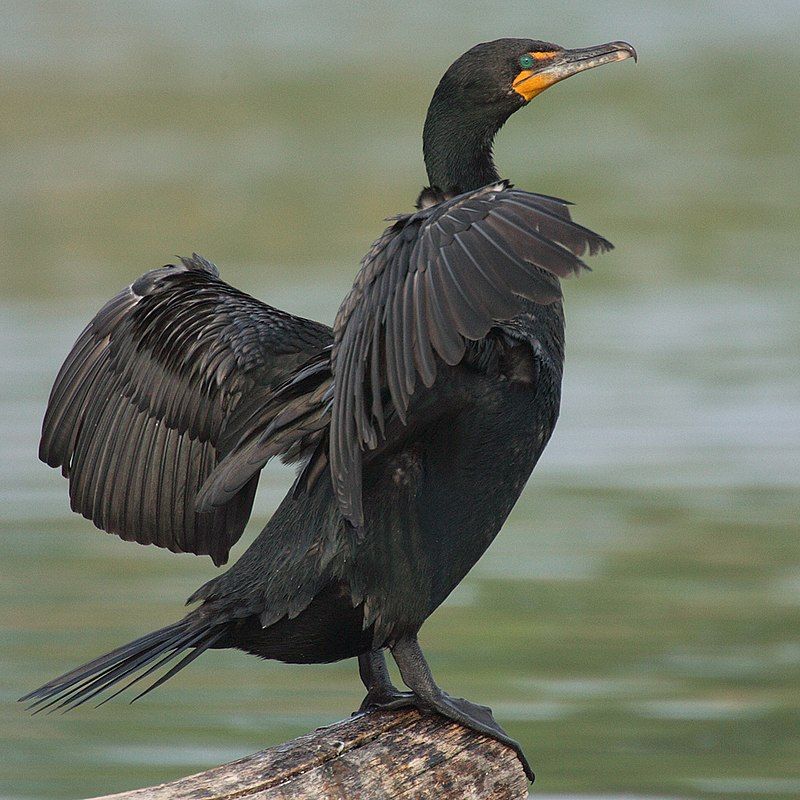
The double-crested cormorant is a species of water bird in the cormorant family. It has a wide range across North America, from the Aleutian Islands in Alaska to Florida and Mexico, living near rivers, lakes, and coastal areas.
This bird prefers shallow water and can often be seen perching on rocks or docks to dry its feathers. Its diet consists mostly of fish, which it dives for and then swallows whole.The double-crested cormorant is easily identifiable by its plumage.
It has black feathers with a glossy greenish-purple sheen, and a unique crest of feathers on either side of its head.
It also has a large, hooked bill and webbed feet, which are adapted for swimming and diving. The double-crested cormorant is a social bird and can often be seen in groups, either resting on rocks, flying, or diving for fish.
It nests in colonies in trees near water, and each pair will have one to two broods of chicks each year. The double-crested cormorant is an important part of the ecosystem, helping to keep aquatic populations in balance by controlling the number of fish and other aquatic creatures.
It is also an important part of many Native American cultures, both as a source of food and as a spiritual symbol.
| Kingdom | Animalia |
| Phylum | Chordata |
| Class | Aves |
| Order | Suliformes |
| Family | Phalacrocoracidae |
| Genus | Nannopterum |
| Species | N. auritum |
15. Greater Roadrunner
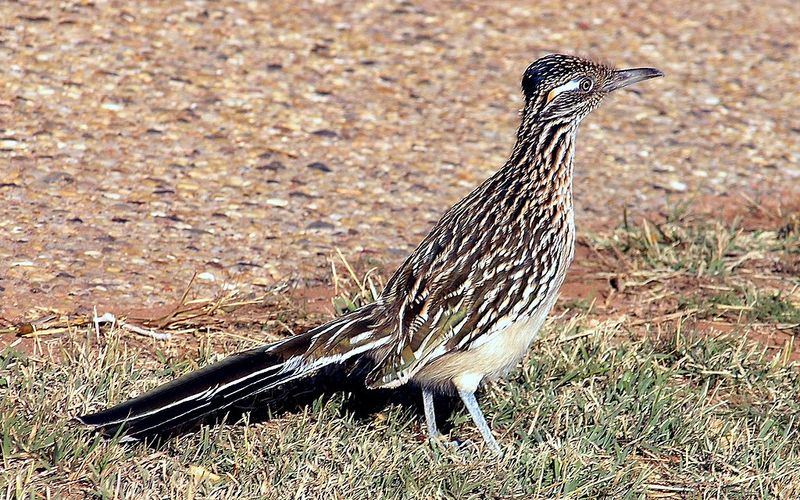
The greater roadrunner, scientifically known as Geococcyx californianus, is a long-legged bird in the cuckoo family, Cuculidae.
This species is native to the Aridoamerica region in the Southwestern United States and Mexico, and its scientific name literally translates to “Californian earth-cuckoo”. The greater roadrunner is one of only two species in its genus, the other being the lesser roadrunner.
The greater roadrunner stands out from other members of its family due to its long legs and unique habitat. It is an opportunistic predator, preying on small animals such as snakes, lizards, and insects.
It is also known for its distinctive vocalizations, which range from a loud, rattling cackle to a low-pitched cackling sound. Its plumage is mostly brown and grey, with a white lower back, and its diet consists mainly of seeds, fruits, and insects.
The greater roadrunner is a unique species that plays an important role in its habitat.
| Kingdom | Animalia |
| Phylum | Chordata |
| Class | Aves |
| Order | Cuculiformes |
| Family | Cuculidae |
| Genus | Geococcyx |
| Species | G. californianus |
16. Blue-Gray Gnatcatcher
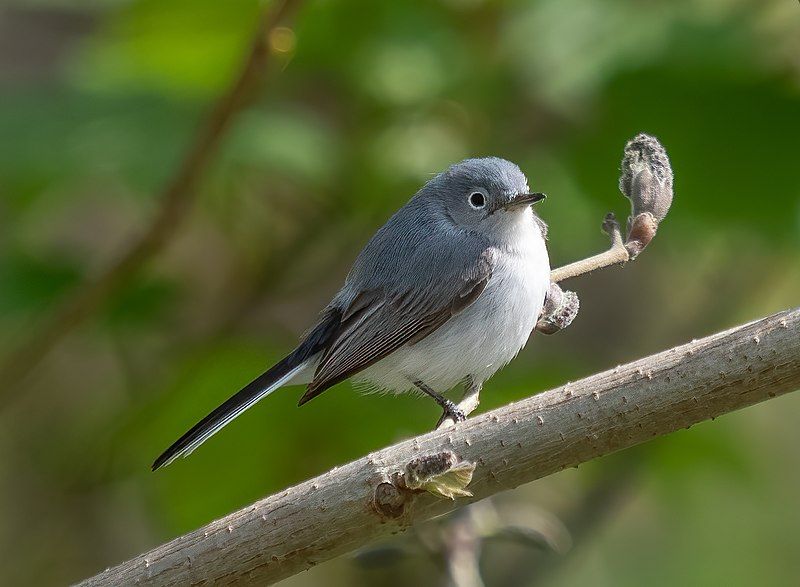
The blue-gray gnatcatcher is a tiny member of the songbird family, native to North America. It is a small bird with a slender body, measuring only 4.5-5.5 inches in length. The upperparts of the bird are a bright blue-gray color with a white throat and belly.
Its wings are long and pointed, and the tail is short and fan-shaped, with white edges. The blue-gray gnatcatcher is found in a variety of habitats, including deciduous and coniferous forests, wetlands, and grasslands.
It feeds mainly on insects, as well as small fruits and berries. During the breeding season, it builds a small cup-shaped nest of moss and grasses, lined with feathers, fur, and spider webs. The blue-gray gnatcatcher is a vocal bird, singing a rapid trill throughout the day.
It is a common sight during the spring and summer months when it can often be found in flocks feeding on insects. Overall, the blue-gray gnatcatcher is a small and attractive songbird and a welcome sight in many parts of North America.
| Kingdom | Animalia |
| Phylum | Chordata |
| Class | Aves |
| Order | Passeriformes |
| Family | Polioptilidae |
| Genus | Polioptila |
| Species | P. caerulea |
Conclusion
Grass Valley is a wonderful place for birds, with a variety of habitats and plenty of food sources. With the variety of birds in the area, it is an ideal spot for birders of all levels to enjoy.
The presence of various protected areas and the efforts of local conservation groups have helped to ensure that the bird population in Grass Valley remains healthy and vibrant.